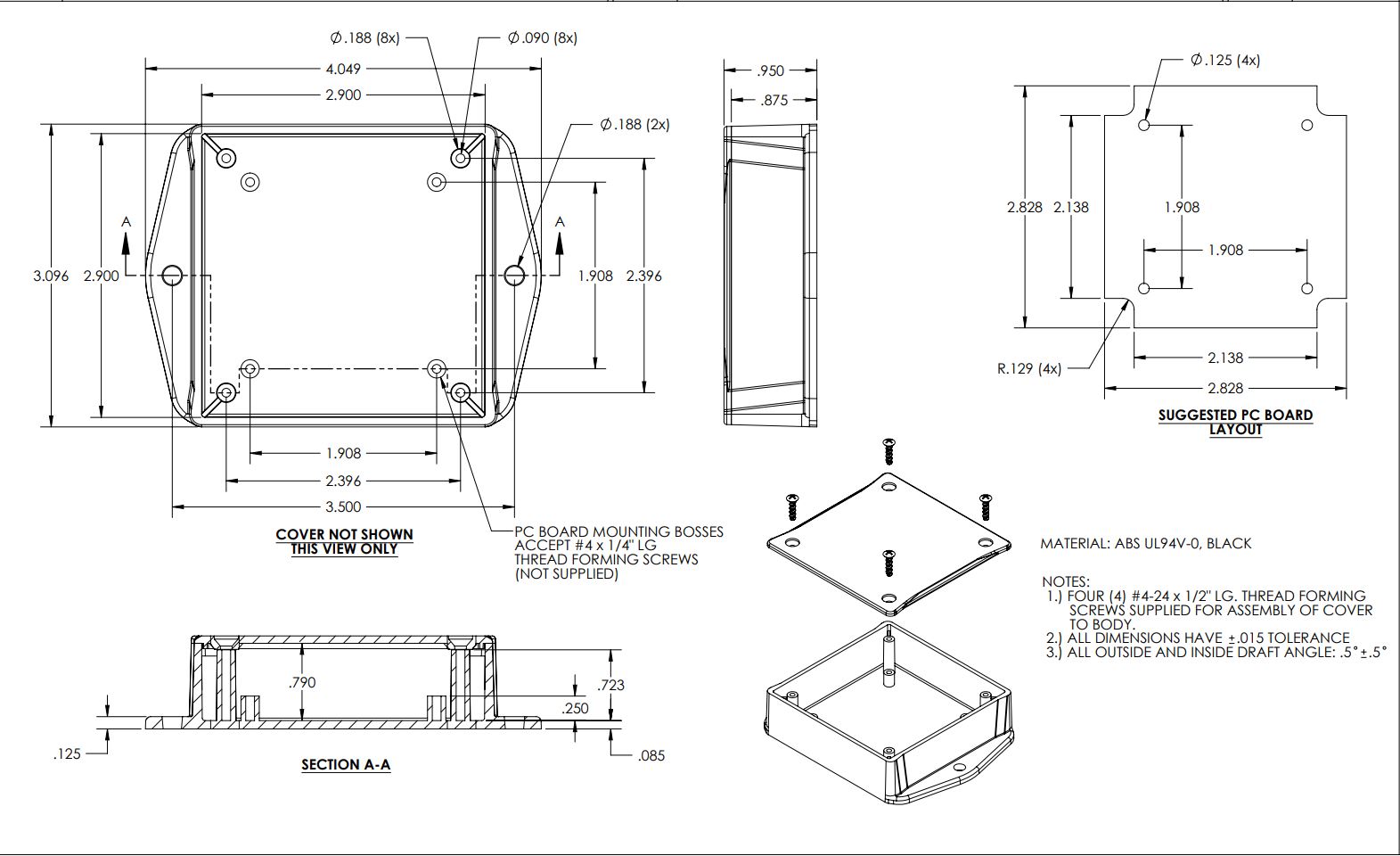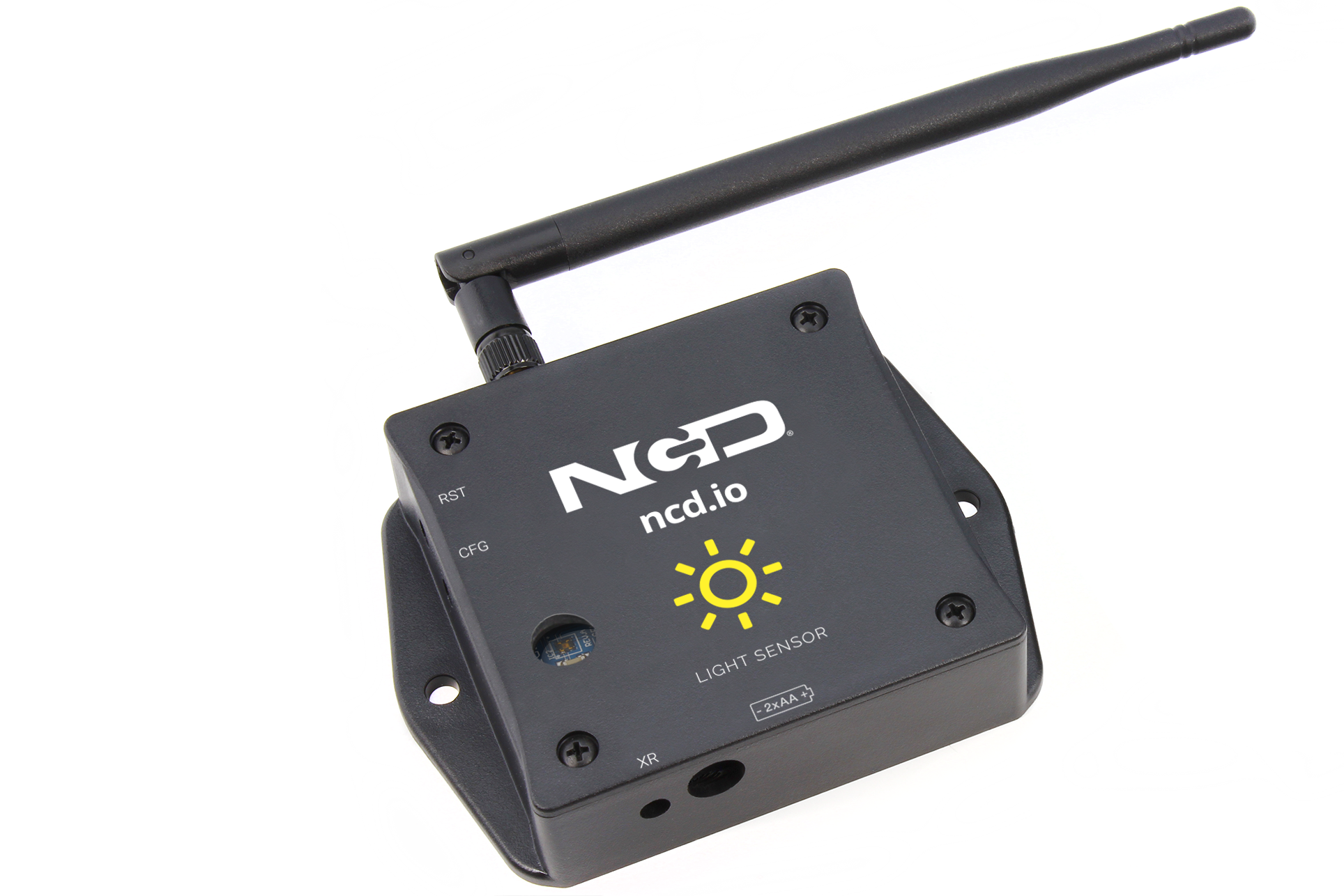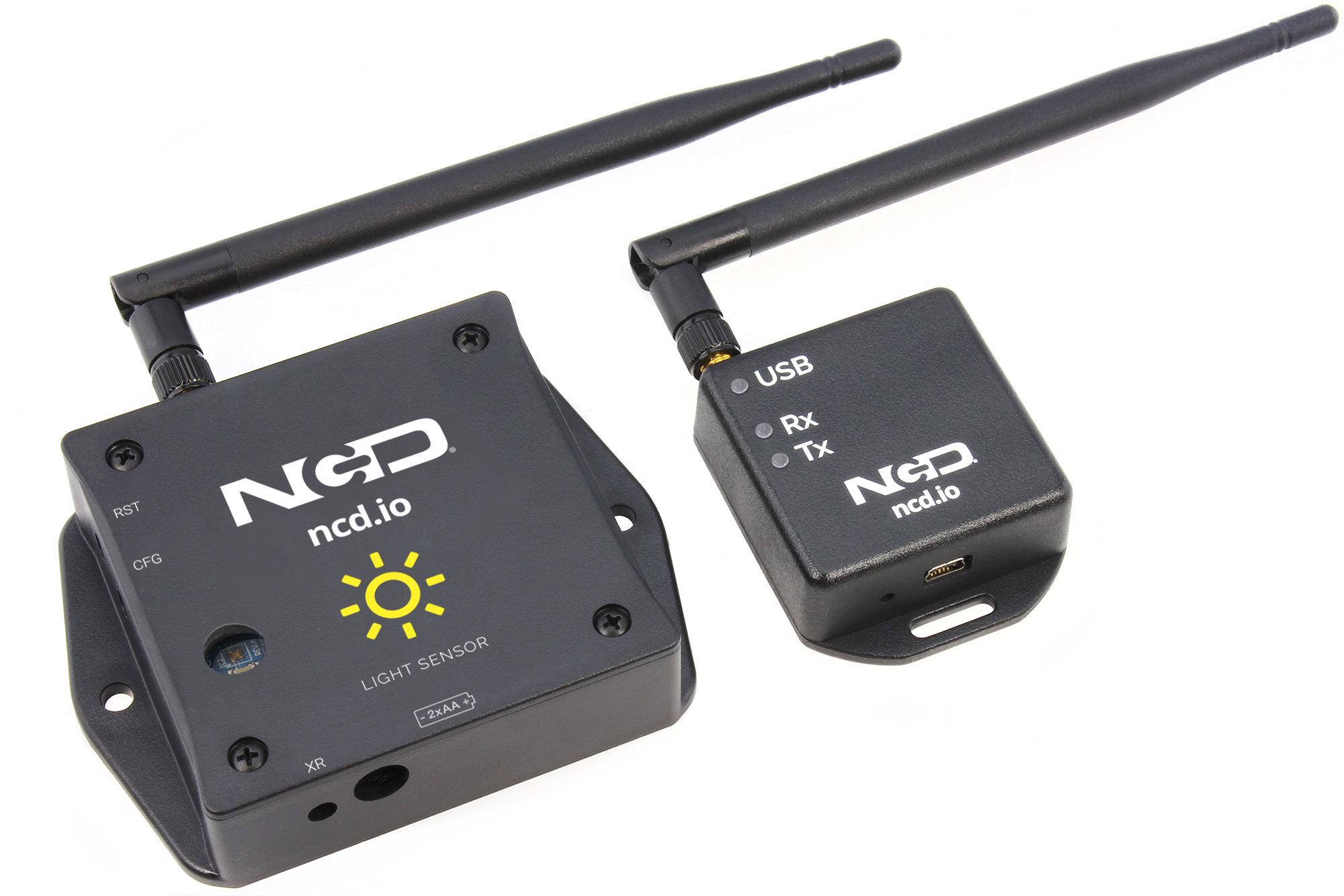IoT Long Range Wireless Light Sensor
Highlights
- Industrial Grade Wireless Ambient Light Sensor with 16-bit Resolution
- Ambient Light Range 0 to 65k Lux with a Resolution of 1 Lux
- Ambient Light Sample Rate of 2.5 Samples per Second
- 10% Ambient Light Change Detection & Transmission
- 2 Mile Line-of-Sight Range with On-Board Antenna
- Superior LOS Range of up to 28 Miles with High-Gain Antennas
- Interface to Raspberry Pi, Microsoft® Azure®, Losant, and More
- Example Software for Visual Studio and LabVIEW®
- Wireless Mesh Networking using DigiMesh®
- Open Communication Protocol for Easy Software Integration
- Small 3″ x 3″ Form Factor Wireless IoT Light Sensor
- Power-Efficient Sleep Mode, Up to 10 Year Battery Life
- User Configurable Sleep duration
- Up to 500,000 Transmissions from 2 AA Batteries
- Includes Battery Level with Every Transmission
- Validates and Retries Lost Communication Packets
Long Range IoT Wireless Light Sensor
Introducing NCD’s Long Range Wireless IoT Light Sensor with an incredible 2 Mile wireless range. This device incorporates a precision Digital Ambient Light Sensor and wireless transmitter that wakes up, sends data, and goes back to sleep at user defined intervals. This Long Range Wireless IoT Light Sensor has an additional feature of detecting changes in ambient light every 7 seconds (user configurable) and sending out samples if the change is greater than 10% (user configurable). To minimize power consumption, this sensor goes to sleep during the time it is not checking for changes in Ambient Light. Both of these features work together to support multiple application areas in one package.
Powered by just 2 AA batteries and an operational lifetime of 500,000 wireless transmissions, a 10 years battery life can be expected depending on environmental conditions and the data transmission interval. Optionally, this IoT sensor may be externally powered for continuous operation.
The long range, price, accuracy, battery life, and security features of IoT Long Range Wireless IoT Light Sensor makes it an affordable choice which exceeds the requirements for most industrial and consumer market applications.
Transmission Interval
This device sends data periodically, based on user-preset timing intervals.
This device samples light levels every 7 seconds (user configured) and sends data when a change of 10% (user configured) light level is detected.

IoT Wireless Light Sensor Applications
- Wireless Indoor Lighting Control
- Wireless Automotive Instrumentation
- Industrial and Commercial Lighting Systems
- Green House Automation and Light Detection
- Home Automation
Mechanical Drawing

Wiring Diagrams
Essential
Examples
Documentation Downloads
Community Repositories
Enterprise 868 MHz Sensors
Enterprise 900MHz Sensors
Not for use in outdoor applications or for use in excessive temperature conditions. Prolonged freezing will prevent batteries from functioning until thawed, using extended temperature range industrial batteries may improve the useful temperature range (included). Extended freezing applications should use a full-time powered solution. Prolonged exposure to extreme humidity conditions may damage this device. Exposure to high temperatures may cause the batteries to leak, causing permanent damage to this device. NCD Warranty does not cover battery corrosion or use in excessively smoky environments under any circumstances.
900HP-S3B Wireless Compatibility Notes
Notice: Compatibility Notes Does NOT Apply to the Following Products:
- NCD Enterprise Solutions
- NCD Wireless Sensors
- NCD Enterprise Modems and Gateways
Notice: Compatibility Notes Applies to NCD Industrial Products, Including Fusion, ProXR, ProXR Lite, Taralist, and Reactor Series Products.
Compatibility Notes
When using an 900HP-S3B communication module, it is essential that you use the ZIGMO_PCB to configure the module settings. Long-Range wireless sensors may be programmed over the air without removing the communications module.
A 900HP-S3B Modem or a gateway of some kind that support the 900HP-S3B communications module will also be required.
Available on backorder


